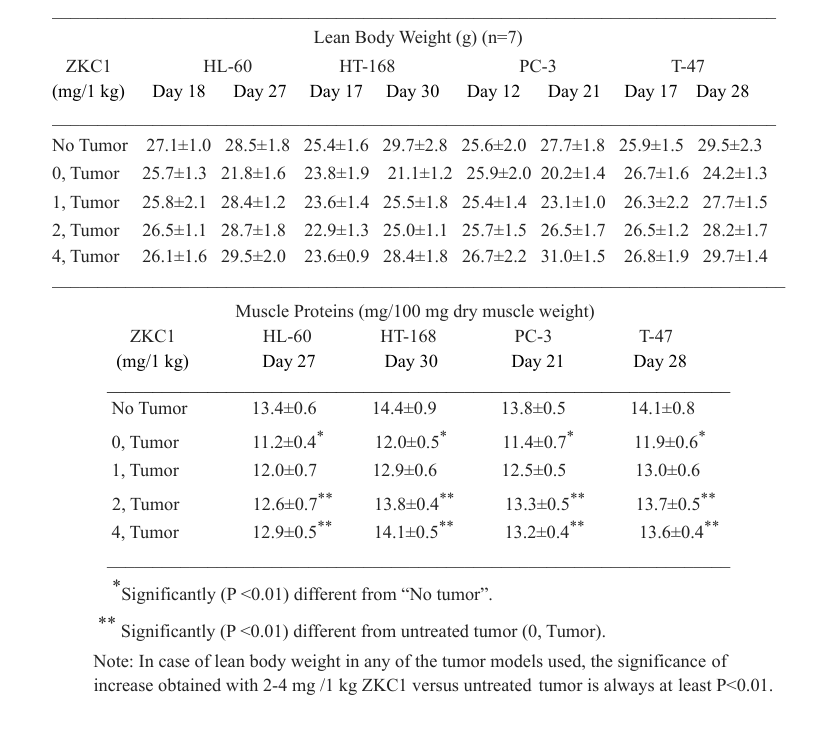 Home
Cachexia
Research
Utility
Advisors
Management
Contact Us
Home
Cachexia
Research
Utility
Advisors
Management
Contact Us
In cachectic mouse tumor models (PC-3 human prostate cancer, T47 human breast cancer, HL-60 human leukemia, HT-168 human melanoma), a selected compound, ZKC1, greatly reduced both the loss of their body weight and muscle proteins (see Table below) when daily subcutaneous treatment started soon after tumor transplantation and lasted until as shown in the TABLE. Even these limited treatments by ZKC1 increased survival by ~20-30%. ZKC1 also has antitumor effects; in these models it inhibited tumor growth by 30-40%, and it also further increased the effects of antitumor agents (like cisplatin and cyclophosphamide) allowing, in addition, the use of larger doses of them.
When in case of PC-3 tumors the treatments were continued for up to 40 days, 3 out of 7 tumors “fell” out of the surrounding skin tissue (i.e. became undetectable). Since ZKC compounds are designed to inhibit choline transport, i.e. inhibit the synthesis of phosphatidylcholine (perhaps the most important component of cell membranes the tumors rely on in determining the interaction between the tumor and the surrounding tissue), our current hypothesis is that ZKC1 inhibits the formation and/or transmission (via the cell membrane) of signals by the tumor involved in triggering cancer cachexia. This is because the connection between the tumor and the surrounding normal tissue is damaged. According to this hypothesis, ZKC1 acts right at the source of cachectic signals and not at the later more diverse stages that would be more difficult to influence.

Directions of Research
1. Increased total content of choline-containing compounds is a characteristic of cancer cells which is associated with both malignant progression and associated cachexia. The company’s research so far has revealed that while ZKC1 only slightly affected choline transport and its subsequent metabolism in normal cells, the same concentrations of ZKC1 strongly inhibited choline transport in cancer cells derived from cachectic tumors (that express different choline transporters and in larger numbers) associated with the reduction of membrane-bound phosphatidylcholine. This research will continue.
2. The most effective and least toxic ZKC compound from our long list (presently 36 compounds) will be identified.
3. A combination of an anti-cachectic human protein and the most effective ZKC compound on cachexia and survival will be further studied in various tumor models.